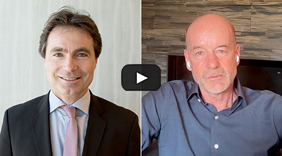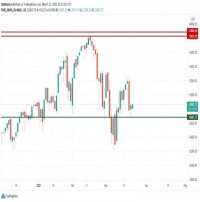|
How Swing-Reversal Works We feature Qbasis, started by Austrians Florian Wagner and Philipp Pölzl
in 2005. Qbasis Fund Management, domiciled in the Cayman Islands, has about $45 million under management. A technology development business founded by Mr. Wagner, Quartaurus IT-Dienstleistungs GmbH, is located in Austria. The Qbasis futures fund returned 72% in 2007 and 145% in 2008. Like other trend following CTAs, it lost money in 2009—down 15% for the year. We asked Mr. Pölzl to explain the strategy and its performance. Philipp Pölzl "Strange as it may sound, we consider 2009 a good year for us from a long-run perspective." My partner Florian Wagner and I came to know each other at a private trading club. He had studied medicine but did a lot of research about trading strategies. I have degrees in law and finance. Florian traded our own and our friends’ money and after experiencing stock market losses in 2000-2001, he decided to find a better way to invest our capital. Looking at different approaches, he got interested in systematic strategies and futures trading. So we started to work with Ziad Chahal, a former commodity trading advisor. He now heads our system development. He developed our MF Trend strategy and he, Florian and a German developer worked on MF Plus, which is a swing-reversal strategy. In 2003 we started trading for our investment club. In 2005 we formed the company Qbasis and soon thereafter started to offer a managed account to outside investors. In April 2008 we started the Qbasis Futures Fund. Over the years our basic strategies have not changed, but we added markets. MF Trend is a breakout trend-following model. It has the ability to enter trends very early and therefore it can profit not only from long-term but also from short-term trends, which gives you a little flexibility. We trade this strategy in 90 markets and are invested in each market almost all the time-we are not invested in a market only 5% of the time, which means that the invested money is diversified on average over 85 markets at all times. A small component within MF Trend is a high-frequency program, which uses the same breakout trend-following approach but applies it intra-day. It has no overnight exposure, with all positions closed at the end of the day. This now has a 10% weighting in the total portfolio, up from 5%. Our high-frequency trading is limited to the 30 most liquid markets. We constantly monitor the open interest, daily volume and slippage in the markets we trade, to make sure the liquidity we need is there and we’re on the safe side when we trade. The MF Plus swing-reversal strategy accounts for 30% of the total portfolio. The idea underlying swing-reversal is to look for over-bought or over-sold situations and go against the market in those situations. This strategy is designed to profit from sideway market movements, to try to make money in periods without trends. We trade it in 50 markets. Swing-reversal has very low correlation to our trend following strategy, therefore it is a good addition to diversify the total portfolio. We do a lot of research and analysis, but we do not interfere with the trading. Once the system gives a signal, we trade that. We’ve back-tested for past events and even September 11, 2001, would not have created a problem. If such a major event does not affect the functioning of the system, it is hard to imagine a situation where we’d have to stop trading. In 2008 the trend following strategy did great, of course, but swing-reversal contributed to returns as well. Strange as it may sound, we consider 2009 a good year for us from a long-run perspective. In 2008 people thought we were making over-sized returns by taking excessive risk and leveraging. So there was some expectation that in 2009 we would lose much more than other managed futures programs. But that is not what happened. Look at the win/loss ratio of how much we gained in 2008 versus how much we lost in 2009. We lost only 10.9% of the gain. Other trend followers lost much more of the previous year's gain-as much as 50%. The combination of 2008 and 2009 shows how well our strategies work. True, we have more volatility than other CTAs, but we also achieve higher returns. At times when trend following does very well, like 2007 and 2008, we do better than other managers and during years that are difficult for trend followers, like 2009, we try to stay in the middle range and not lose more than others. In 2009, there were two problems. One was declining market volatility, which is a problem for all trend-following programs. For our strategies, increasing volatility is very good, inconsistent volatility is also fine, but constantly decreasing volatility is difficult to handle. Our swing-reversal strategy did better than trend following in 2009, but it was negatively affected by declining volatility. Problem number two in 2009 was choppiness: as soon as a trend became tradable, it reversed. We plan to offer a new product in a few months, to be sold in retail markets throughout Europe. This is not a UCITS fund but a Liechtenstein-based, exchange-traded product under the name Qbasis Futures Fund. The minimum investment will be Euro 2000 and the product will have daily liquidity. We got into managed futures to invest our own money and we continue to do so. If we were not confident that our strategy will continue to out-perform, we would not be in it. |
|
This article was published in Opalesque Futures Intelligence.
|





 RSS
RSS











